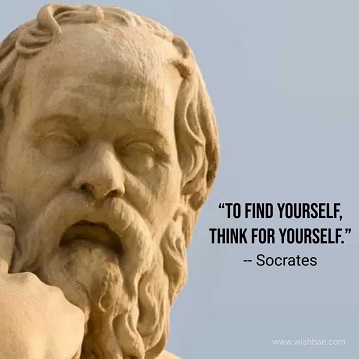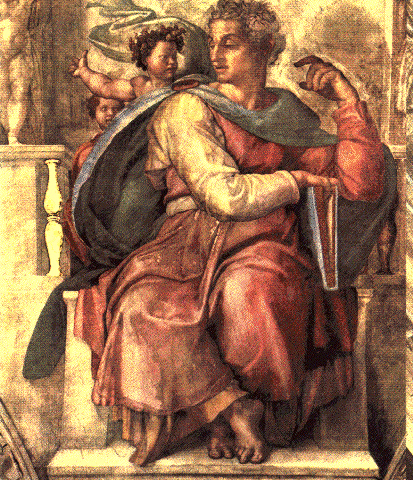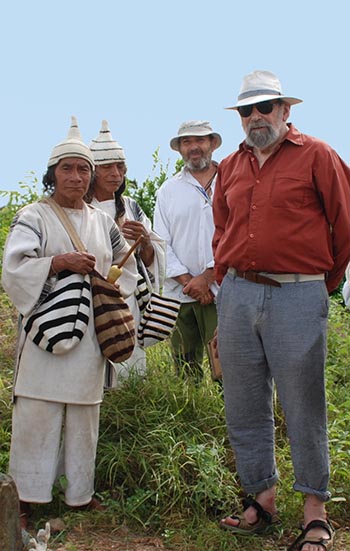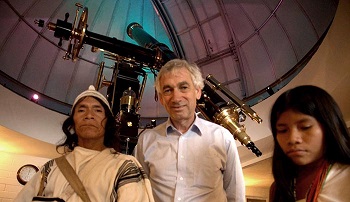|
Word Gems
exploring self-realization, sacred personhood, and full humanity
Socrates
elenchus, the Socratic method

Socrates: 469 BC - 399 BC
from https://iep.utm.edu/socrates/
As famous as the Socratic themes are, the Socratic method is equally famous. Socrates conducted his philosophical activity by means of question an answer, and we typically associate with him a method called the elenchus. At the same time, Plato’s Socrates calls himself a midwife—who has no ideas of his own but helps give birth to the ideas of others—and proceeds dialectically—defined either as asking questions, embracing the practice of collection and division, or proceeding from hypotheses to first principles.
A typical Socratic elenchus is a cross-examination of a particular position, proposition, or definition, in which Socrates tests what his interlocutor says and refutes it. There is, however, great debate amongst scholars regarding not only what is being refuted but also whether or not the elenchus can prove anything. There are questions, in other words, about the topic of the elenchus and its purpose or goal.
Socrates typically begins his elenchus with the question, “what is it”? What is piety, he asks Euthyphro. Euthyphro appears to give five separate definitions of piety: piety is proceeding against whomever does injustice (5d-6e), piety is what is loved by the gods (6e-7a), piety is what is loved by all the gods (9e), the godly and the pious is the part of the just that is concerned with the care of the gods (12e), and piety is the knowledge of sacrificing and praying (13d-14a). For some commentators, what Socrates is searching for here is a definition. Other commentators argue that Socrates is searching for more than just the definition of piety but seeks a comprehensive account of the nature of piety. Whatever the case, Socrates refutes the answer given to him in response to the ‘what is it’ question...
In Plato’s Theaetetus Socrates identifies himself as a midwife (150b-151b). While the dialogue is not generally considered Socratic, it is elenctic insofar as it tests and refutes Theaetetus’ definitions of knowledge. It also ends without a conclusive answer to its question, a characteristic it shares with a number of Socratic dialogues.
Socrates tells Theaetetus that his mother Phaenarete was a midwife (149a) and that he himself is an intellectual midwife. Whereas the craft of midwifery (150b-151d) brings on labor pains or relieves them in order to help a woman deliver a child, Socrates does not watch over the body but over the soul, and helps his interlocutor give birth to an idea. He then applies the elenchus to test whether or not the intellectual offspring is a phantom or a fertile truth. Socrates stresses that both he and actual midwives are barren, and cannot give birth to their own offspring. In spite of his own emptiness of ideas, Socrates claims to be skilled at bringing forth the ideas of others and examining them.
from Wikipedia
Elenchus (Ancient Greek: ?λεγχος, romanized: elenkhos, lit. 'argument of disproof or refutation; cross-examining, testing, scrutiny esp. for purposes of refutation'[4]) is the central technique of the Socratic method. The Latin form elenchus (plural elenchi) is used in English as the technical philosophical term.[5] The most common adjectival form in English is elenctic; elenchic and elenchtic are also current. This was also very important in Plato's early dialogues.
|
Editor's last word:
Notes on elenchus:
Greek: "argumentation";
if the true forms cannot be reached via sensory experience, what is left as means to discover what is real? A dialectical or argumentative approach, with others and with the self;
not a rhetorical device to embarrass an opponent but to find the truth; sometimes, communing with the soul, an internal contemplative discourse, an introspective spiritually-guided inquiry into Aristotle's "first things"; this dialectical helps to get past ephemera.
|
Special note: as important as questioning is, listening seems to be even more paramount:
|
Consciousness, not matter, discovered to be elemental by the Kogi people of South America
In the “creativity” article, we spoke of the famous painting wherein Isaiah is listening.

Isaiah listening versus Isaiah questioning
We in the West are proud of the scientific method; and, rightly so, as it’s produced an awesome array of technological advancement.
However, there’s another, entirely different, but absolutely valid, approach to knowledge production of which we tend to be oblivious. It is the realm of intuition, of creativity’s “discontinuous” leaps forward, the quantum realm of the mind’s infinite possibilities, the child of Universal Consciousness.
In this latter world, Isaiah does best just to listen and will refrain from asking questions. Why this diminishment of questioning? Questioning does fine when allied with the scientific method but gets in the way when we enter the intuitive realm. The problem with questioning is that it presumes an intellectual framework into which we desire new information to fit. In a sense, we've already decided what the answer ought to be. But what if the answer is far above our present paradigms of knowledge with no correspondence to present understanding; in such case, it would be best to maintain silence and simply listen, as “The Wedding Song” uses the phrase, to “something never seen before.”
What I’m about to introduce must be presented in severe elliptical fashion. Brevity must rule as the subject is too large, but worthy of extensive study and consideration. I hope that you will learn more by searching the linked references.
the Kogi people have learned to listen

For some decades British journalist-anthropologist Alan Ereira has investigated the high-mountain tribal Kogi people who live in the Sierra Nevada de Santa Marta in the north of Colombia.
The Kogi have learned to listen to the whispering messages of Universal Consciousness, as expressed in Nature, to a degree that might be unrivaled in the world, save for the best medicine men of North American indigenous peoples.
We have discussed this form of "listening", this "going within" to access Universal Intelligence, on the "true self" page. But the Kogi are masters, far ahead in this, and take it to high art-form.
How can we confirm their expertise? The Kogi know things, and are able to do things, for example, in terms of environmental cleansing, reforesting, of healing the land, that we in the West are not able to do.

immediately picks out the one star in a blizzard of galaxies
During a trip to London, this Kogi master met with a leading astronomer. A photograph was brought out of the Hubbell “deep field,” a tiniest postage-stamp, and apparently empty, section of the inky blackness which, under intense magnification, revealed some few thousand galaxies. As confirmed by the astronomer in the video, the Kogi immediately pointed to the single star – not a galaxy – amidst the blizzard array and, in Kogi language, referred to it by name; as if it were a close friend! All this is sensational enough, but, let's keep in mind, this star resided in a section of the heavens totally hidden and unknown, totally inaccessible to human eyes, until just a few years ago.
Much of the Kogi wisdom remains cloaked to us. They refer to us in the West as their “younger brothers.” Prodigal brothers, we take it. They don’t fully trust us to do the right thing, as the memories still linger of the RCC-Conquistador brutalities and genocide.
But the Kogi understanding of Universal Consciousness (UC) is right in line with what physicists such as Prof. Amit Goswami tell us about the quantum realm: UC represents infinite possibility but has pared down the choices so as to direct reality toward prescribed goals and destinies. In this vein, Alan Ereira reports that Kogis have a view of “Mother [Consciousness] as memory and possibility.” This is Dr. Rupert Sheldrake’s “the mind is a quantum field of possibility.”
Out of this primordial essence of Mother Consciousness -- which is the ground of reality, not matter -- all things were created. However, before she created, she “explored, almost infinitely” the various possibilities to arrive at just the right mix for those of us who would inhabit Earth. This is the answer to Leibniz’s question of the “best of all possible worlds.”
See Beshara Magazine's article on the Kogi.
See Alan Ereira's report.
View Alan Ereira's video.
|
|



